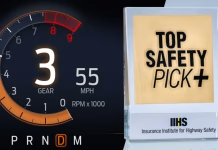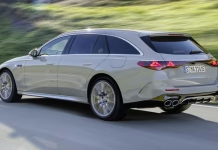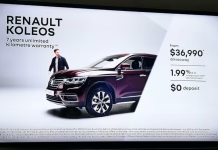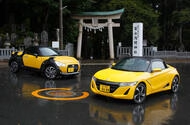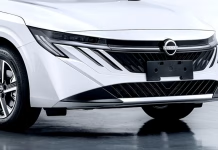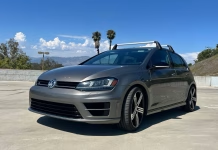Ford Focus SUV Leads Affordable Crossover Comeback in Europe for 2027
 Expansion of model line-up on the cards – with affordability in focus
Expansion of model line-up on the cards – with affordability in focus
Ford is preparing to launch a crucial new Focus-sized crossover as the first step in a radical rethink of its European gameplan.
Following the landmark unveiling of a new platform for affordable EVs in the US, Ford is expected to follow up soon with details of how it will expand and electrify its European range – emphasising its commitment to remaining an important player in the region’s car market.
Ford took the Fiesta out of production in 2023 so it could start building the electric Explorer and Capri crossovers – which cost around twice as much as the petrol supermini – at its Cologne factory in Germany, leaving the Puma as its cheapest car.
With the Focus due to end production in November as Ford shuts its Saarlouis factory in Germany, the company’s car line-up is, on average, far more expensive than it has been at any point in its 122-year history.
But a wide-reaching shake-up of the firm’s European business in the coming years – which is set to be detailed soon – is intended to restore it to a mass-market volume player that once again does battle for sales chart supremacy in the region, while boosting its electric vehicle sales mix with the introduction of more affordable models.
The company will put a stake in the ground in 2027 with the launch of a new mid-sized crossover, built in Spain and effectively filling the gap left by the Focus when it retires later this year.
New 'Focus' SUV
With an annual capacity of 300,000 units at its Valencia plant in Spain, the new crossover could become one of Ford’s best-selling model lines globally.
It will not replace the Kuga, but rather will be sold alongside it as a separate model line that introduces a ‘multi-energy’ powertrain offering with petrol-hybrid and electric drivetrains, as it has done with the Puma.
As the two cars will be built in parallel at Ford’s Valencia plant, it is also expected to be a close match size-wise – to avoid the need for costly alterations to the production line and process – while also sharing key components.
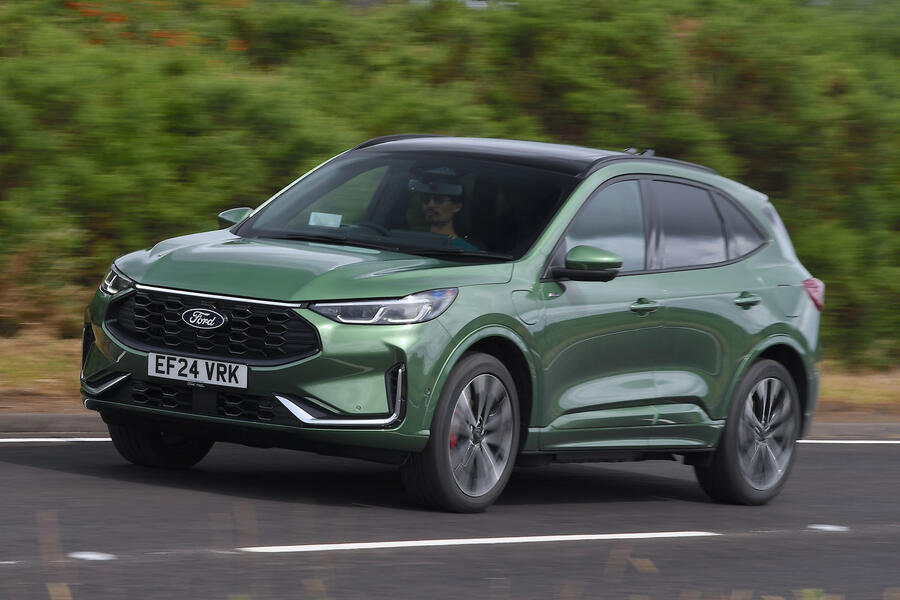
The new model is highly likely to be based on the same ‘C2’ platform that Ford uses for mid-sized C-segment models in Europe.
Having first been used for the outgoing fourth-generation Focus from 2018, this architecture underpins a range of saloons, crossovers and SUVs worldwide – testament to its flexibility – but has so far yet to accommodate a pure-electric powertrain.
But while Ford has abandoned its pledge to offer only electric passenger cars in Europe from 2026, it still needs to totally electrify its cars by 2035 in the UK and EU and significantly boost its EV sales mix in the years before that – so the new ‘multi-energy’ model is likely to be offered as a pure-EV, even if not initially.
In a recent interview with Autocar, executive chairman Bill Ford doubled down on the ongoing importance of a combustion offering in the firm’s European line-up, with EV uptake generally lagging behind the levels that had been forecast by law makers.
He said: “What went wrong is that the regulators got out ahead of the customers. That’s never a good situation. In the future, electrification will play a very important role in transportation, but it won’t be the only part. The ICE business will be gradually phased out, but it won’t disappear. What happens will vary according to region.
“At Ford, we’ve invested in all of these clean technologies, and I feel good about that. But it’s down to customers. They want what they want, and it’s our job to give it to them.”
The Kuga is currently offered with a choice of mild, full or plug-in hybrid powertrains – though Ford has not said which could be carried over into a new model. One potential addition to the ranks could be a range-extender (REx) system, following Ford’s confirmation last year that it was developing REx technology for SUVs and pick-ups in response to a global dip in demand for pure-EVs in those segments.
Regardless of powertrain, the new model will need to be substantially differentiated from not just the Kuga but also the electric-only Explorer and Capri crossovers.
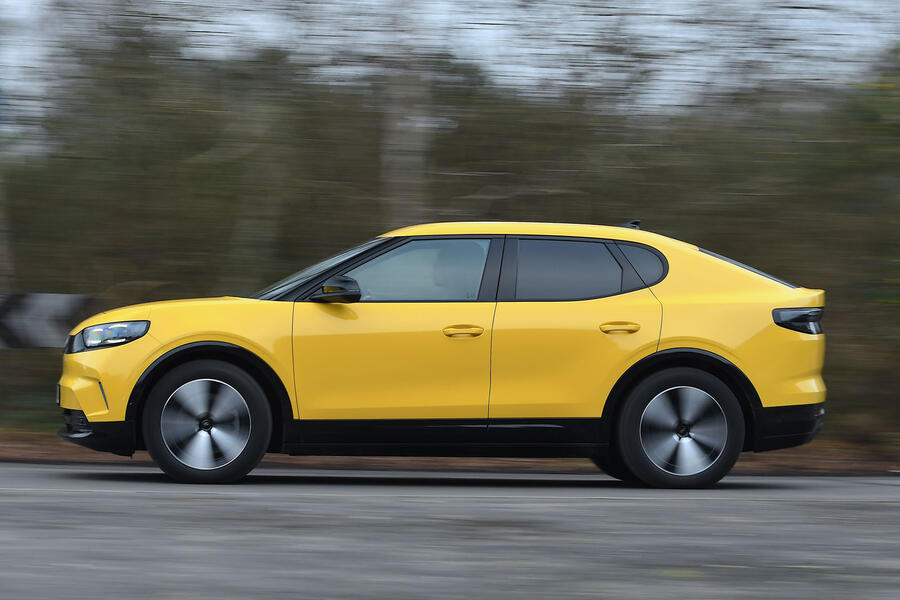
A diverse powertrain offering will be one means of giving the new arrival a clearly defined position, but it is also likely that the new crossover will be significantly more affordable than those models.
Introducing more electrified cars at a far lower price point than the £40k Explorer will be pivotal in helping Ford to reduce its fleet emissions and growing market share. For reference, the new electric Puma Gen-E, priced at around £26k, drove a 324% year-on-year uptick in Ford’s UK electric vehicle sales in the first half of 2025 – demonstrating the importance of maintaining an affordable entry point into each segment.
There is currently a circa-£14k gap between the electric Puma and Explorer, and it is in here that the new crossover is expected to be pitched, lining it up as a rival to the likes of the Volkswagen Tiguan, Kia Sportage and Hyundai Tucson – some of Europe’s best-selling cars – with a starting price in the mid-£30,000s.
A return to the glory days of the mid-1990s, when Ford dominated the European market with the wildly popular Escort, Fiesta and Mondeo – claiming a share of around 12% – is unrealistic. Today, the firm has around a third of that figure, has axed the Fiesta and Focus and must face off against a far greater number of rivals in all segments these days – but Renault’s 6.7% share would seem a viable target.
Distinctive designs and dynamics play a central role in Ford’s ploy to grow again in Europe, so the new Valencia-built SUV will be styled according to the company’s bold new American-flavoured design principles, and engineered to give driving characteristics that major on engaging handling and refinement – attributes that have long helped Ford’s cars claim an edge over rivals in Europe.
The company, like many other European marques, is looking to leverage its strong heritage in the region and the brand’s defining qualities – as part of a bid to keep new Chinese rivals at bay – and that extends to the redeployment of historic, familiar nameplates such as Capri and Explorer.
Ford has given no indication of what the new multi-energy car could be called, but has recently filed to trademark terms including Fuze, Mythic and Hive, which some reports have suggested could be used for upcoming new models.
However, given the firm’s strategy of retaining existing badges, it is more likely any new Europe-focused hatchback would bring back a previously used moniker – and given it will effectively fi ll the gap in the line-up left by the departing Focus, that name would seem a logical fit.
In the past few years, the company has also renewed the rights to names such as Zephyr, Orion, Granada and Cortina.
Ford's European problem
The Blue Oval’s eponymous executive chairman Bill Ford hinted at a forthcoming shift in strategy for the company’s European car business.
“Well, of course we’ll go on [in Europe]. On the passenger car side, we realise we’re not as robust as we need to be,” he admitted, but added: “We’re working on our future strategy right now. But I think you’ll be surprised – pleasantly surprised – by what’s coming.”
He gave no indication of what changes would be made, but recent developments all point to the company reversing its EV-led shift upmarket in a bid to regrow its share of the local market.
Bill Ford suggested that his company’s original strategy of rapid total electrification in Europe was underpinned by the general consensus that market demand for EVs would rapidly accelerate throughout the 2020s on the way to a mandated shift to pure-EVs in the middle of the next decade – a trend that has ultimately been much slower than forecast.
Indeed, Ford’s then EV boss Marin Gjaja (now its chief strategy officer) told Autocar last year that the plan to totally electrify its European passenger cars by 2030 had proved “too ambitious”, and Ford – like many other manufacturers including Volvo, Renault and various Stellantis brands – had slowed its all-EV ambitions in light of sustained demand for combustion cars.
Introducing a new ‘multi-energy’ offering with a mix of combustion and EV powertrains will allow Ford to cater to evolving market demands while it transitions to a pure-electric future.
US experiment
Ford recently laid the groundwork for a global fightback with confirmation that it would launch a new family of affordable EVs in the US from 2027, all based on the new Universal EV Platform (UEVP) and built at its factory in Kentucky. A $30k (£22k) pick-up for the American market will be the first, but the company will leverage the platform’s modularity by also using it for hatchbacks, crossovers, small vans and large SUVs.
CEO Jim Farley said it will export these US-built EVs to other global markets – “from Louisville to the world” – but any Europe-focused smaller models are likely to be built locally on this side of the Atlantic, as with the Valencia-built SUV, given the need to minimise costs and the differing market demands here. The UEVP architecture has also been engineered to accommodate exclusively electric power, so will be wholly distinct from the C2 platform Ford uses here.
Nonetheless, headlines of Ford’s landmark US announcements could have international implications.
As part of the major strategy announcement in Kentucky recently – referred to as a ‘Model T moment’ – Ford gave details of the new factory model it will use to build its new-generation EVs: the Ford Universal EV Production System. This will essentially replace the traditional linear assembly line with three primary branches, giving an ‘assembly tree’ that will assemble the front, rear and central structures of a car simultaneously. These major components will be formed from large, single-piece aluminium unicastings, which Ford says replace “dozens of smaller parts”, and require 25% fewer fasteners.
We tore up the moving assembly line concept and designed a better one,” said Farley, highlighting that the more efficient build process will be a signifi cant factor in reducing the cost of these new-gen cars, with Ford claiming it will allow for 40% fewer workstations in the factory and boost production times by 15%.
If the move is successful, there is a strong likelihood that Ford could roll out the new production model globally, which would have huge implications for its European business. Making its Romanian, Spanish and German factories more efficient and cheaper to operate could enable Ford to reduce the prices of the cars it builds in them, thereby making the cars more attractive to a wider demographic and accelerating its planned growth in the market.
Safety rules tighten as IIHS demands anti-speed and alcohol tech for top car ratings
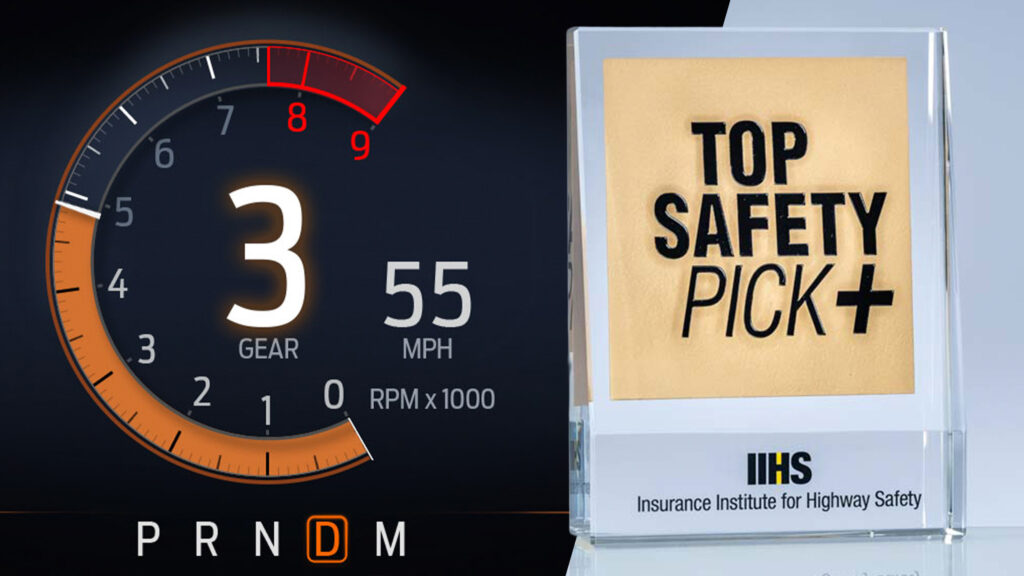
Mercedes AMG E53 Wagon Delivers 604 Horsepower Plug In Hybrid Power for Under 95000
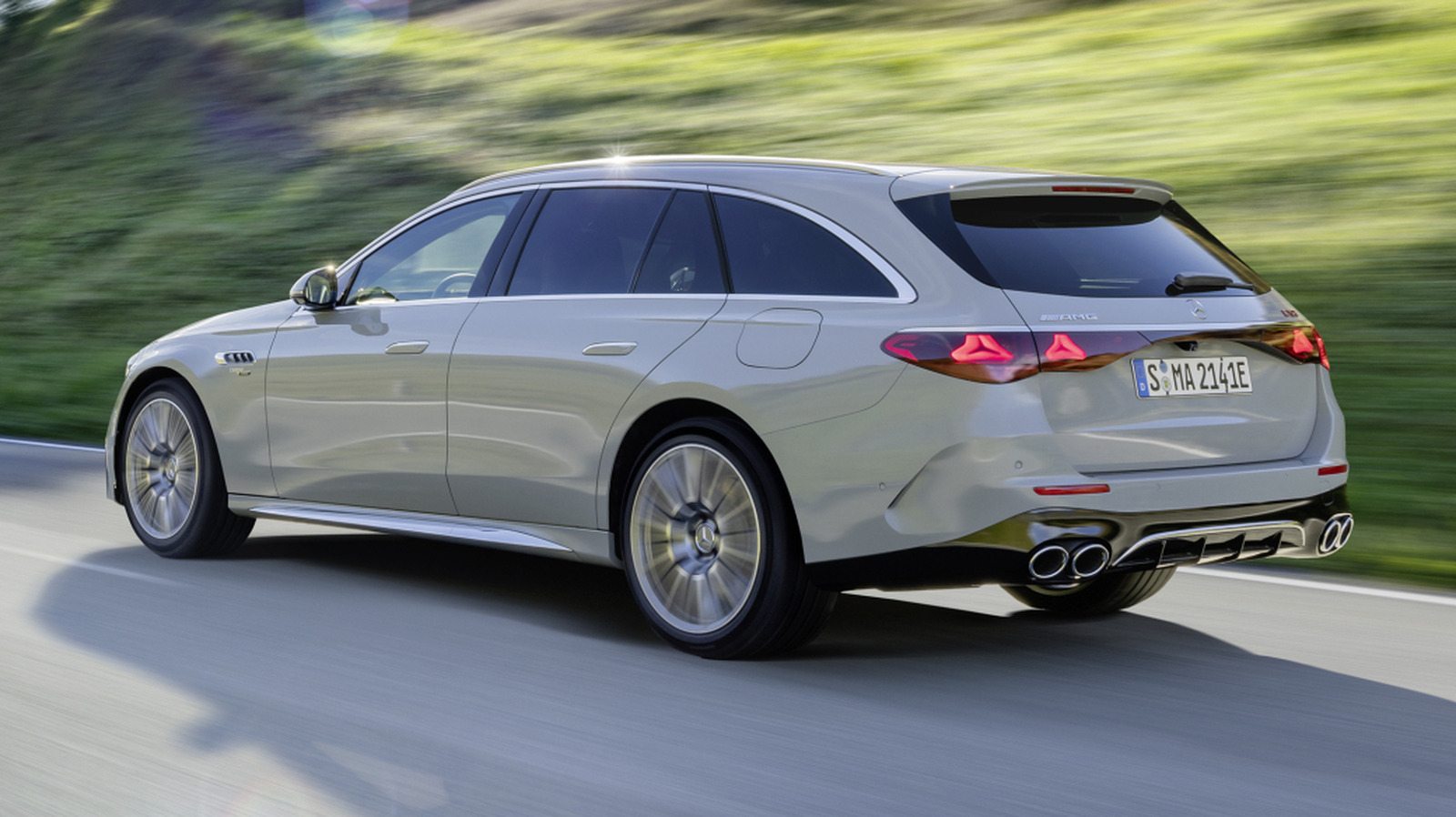
BYD supercar brand Yangwang set for UK debut in 2027 with high performance lineup
 Yangwang, launched in 2023, sits above BYD and Denza in the firm's pyramid
Yangwang, launched in 2023, sits above BYD and Denza in the firm's pyramid
BYD’s Ferrari-rivalling Yangwang brand will enter the UK, but not until 2027, according to the firm’s Europe chief.
The Chinese giant will launch its Denza brand in Britain next year with a three-car line-up designed to take on premium rivals such as Porsche and Audi – and the more extreme Yangwang will follow soon after.
Stella Li, BYD’s vice-chairman and Europe boss, said the push to bring both brands to the UK comes because it is one of the “leading countries for premium car sales, and so is very important for our Denza brand – and very important for Yangwang in the future”.
According to Li, the decision to wait until 2027 to launch Yangwang in the UK was to ensure it would be able to compete from the off. She said: “We need to build up the team [for the UK]. We need to build up the foundation. And we will do that step by step.”
The brand was launched in 2023 with the Yangwang U8 - a huge range-extender luxury SUV that packs more than 1000bhp, outpaces the BMW M3, can turn 360deg on the spot and floats on water.
That was followed shortly after by the U9, an electric supercar that cracks 240mph and can use its fully hydraulic suspension to jump on the spot or drive on three wheels.
Both cars have been on sale in China for around two years, priced at the equivalent of £120,000 and £200,000 respectively.
Li previously said the U8 and U9 are earmarked for European sale, as well as "more cars coming" including the U7 super-saloon – a quad-motor Lotus Emeya rival with 1250bhp and 1237lb ft for a 0-62mph time of 2.9sec.
BYD also has a burgeoning electric van range in China and Li hinted that could also be introduced to the UK in the near-future, given the lucrative business opportunities.
Renault Koleos Ad Surprises Texas Rangers Fans With Car Not Sold in America

E-car category promises affordable small cars to boost European industry and counter Chinese competition
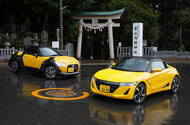
Japan's kei car class has existed since 1949 and remains hugely popularEuropean Union president vows to support industry through new ‘E-car’ category as Chinese threat looms
European Union president Ursula von der Leyen will work with car industry bosses to develop a new ‘E-car’ category of small affordable cars in a bid to help safeguard the industry.
In July, Stellantis chairman John Elkann and then Renault Group boss Luca de Meo proposed creating a class of small cars with fewer safety regulations that would be cheaper to build and emit fewer lifecycle emissions.
The proposal was loosely based on Japan's kei car class, which accounts for around 40% of the Japanese domestic market.
At this week's Munich motor show, numerous car industry bosses – including new Renault Group chief François Provost, the BMW Group's Oliver Zipse and Stellantis’s Jean-Philippe Imparato – called for urgent action on current EU rules that will ban the sale of new ICE cars by 2035. They argue that this risks damaging the European car industry, which is facing a threat from aggressive Chinese rivals.
Zipse and Imparato both suggested plans for evaluating the lifecycle CO2 emissions of vehicles, rather than simply measuring emissions at the tailpipe – a move that would give car firms more freedom to use a variety of different powertrains while still reducing CO2 emissions.
In her annual State of the Union address, von der Leyen described the European car industry as “a pillar of our economy and industry”, acknowledging that “millions of jobs depend on it.”
Von der Leyen noted that the EU had already added flexibility to the 2025 CO2 targets that car firms must hit and added: “With respect for technology neutrality, we are now preparing the 2035 review.”
The German politician also gave her support for the proposed ‘E-car’ class, saying: “Millions of Europeans want to buy affordable European cars, so we should also invest in small, affordable vehicles, both for the European market but also to meet the surge in global demand. This is why we will propose to work with industry on a new small affordable cars initiative.
“I believe Europe should have its own E-car. E for environmental – clean, efficient and lightweight. E for economical – affordable for people. E for European – built here in Europe with European supply chains. Because we cannot let China and others conquer this market."
It isn't yet clear which powertrain types will be permitted in the new E-car class. However, von der Leyen said: “No matter what, the future is electric, and Europe will be part of it. The future of cars – and the cars of the future – must be made in Europe.”
Toyota Land Cruiser GR Sport Rally Raid Debuts as Ultra-Limited Off-Road Tribute
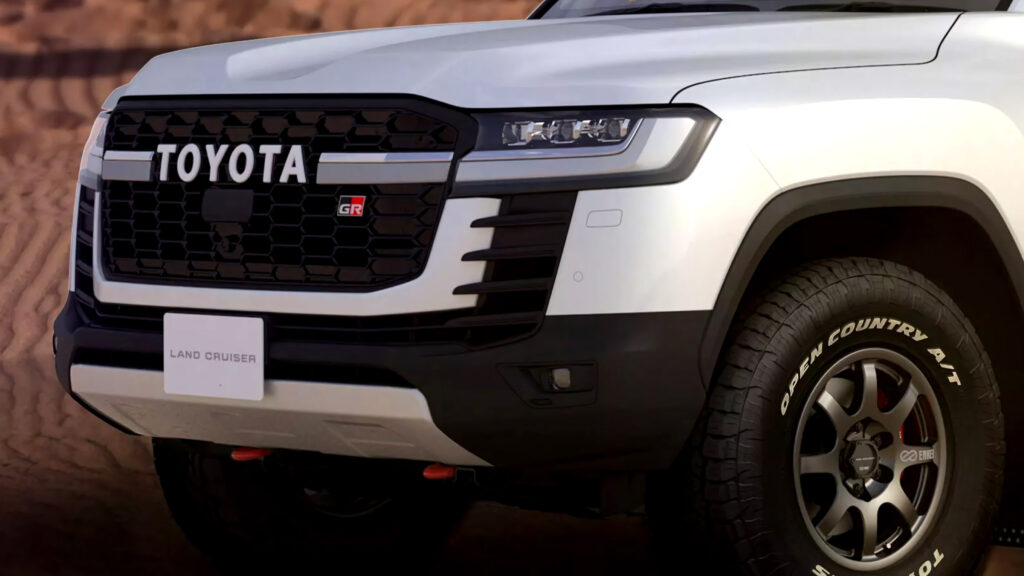
Nissan Sentra Debuts Sharper Look and Hybrid Power for 2026 Sedan Comeback

Hot Hatch Value Is a Low Mileage Model Worth the Premium

Ora Cat SUV debuts with retro design and 201bhp electric power
 New Ora Cat SUV – likely to be renamed when it arrives in the UK next year – gets 201bhp and an LFP battery
New Ora Cat SUV – likely to be renamed when it arrives in the UK next year – gets 201bhp and an LFP battery
GWM is priming a new electric crossover to sit alongside the Ora 03, a new filing with China's Ministry for Industry and Information Technology has revealed.
The new Ora model, known simply as the Cat in China, adopts the retro-inspired styling cues familiar from the 03. These include round headlights and fuller forms within its surfacing.
Roof bars and greater ground clearance via a raised ride height provide an added touch of ruggedness compared with previous Ora models.
At the rear, the car features a clamshell-style tailgate and tail-lights that are incorporated into the lower section of the rear windows, echoing the design of its smaller sibling.
At 4471mm long, 1833mm wide and 1641mm tall, with a wheelbase of 2720mm, Ora’s first SUV is notably larger than the 03, which runs to 4235mm long, 1825mm wide and 1596mm tall, with a wheelbase of 2650mm.
Ora has yet to confirm details of the drivetrain, but the type approval documents suggest it will receive a 201bhp electric motor as well as a lithium-iron-phosphate (LFP) battery from Honeycomb Energy. Braking and energy recuperation is by-wire, using technology developed by Chinese supplier Feigetech.
The new Ora Cat is set to be offered with a choice of roof-mounted lidar sensors, additional cameras and side radar sensors to support advanced driver assistance functions in its home market.
The Cat will sit alongside the Good Cat, Lightning Cat and Ballet Cat in Ora’s Chinese line-up, and is expected to strengthen the brand’s position in export markets including the UK when sales outside of China begin in 2026.


